Here’s how you can get a jump-start on your orchard or food forest, even if you’re a couple of years away from buying your dream homestead property.

It All Starts With Planning
When my husband Mike and I first decided to become homesteaders, we brainstormed many ideas, set goals, and formed plans to build a sustainable homestead.
One of those goals included being more food secure, by growing most of our own food, including many fruits. When making our plans, we needed to determine the following:
- What fruits do we want to grow?
- Will this fruit grow in our climate on our land?
- Why does this fruit need to be on our homestead?
- How and when will we obtain these fruits?
By answering these questions for yourself, you too, can get a jump-start on your homestead orchard, food forest or edible landscape.
What Fruits Do You Want to Grow?
What fruits are your favorites to eat? Apples? Grapes? Peaches?
There’s nothing more motivating than growing your favorite fruits. Choose one or two of your favorites to start. Blackberries are one of my favorites and it was the first fruit I bought to grow our homestead.
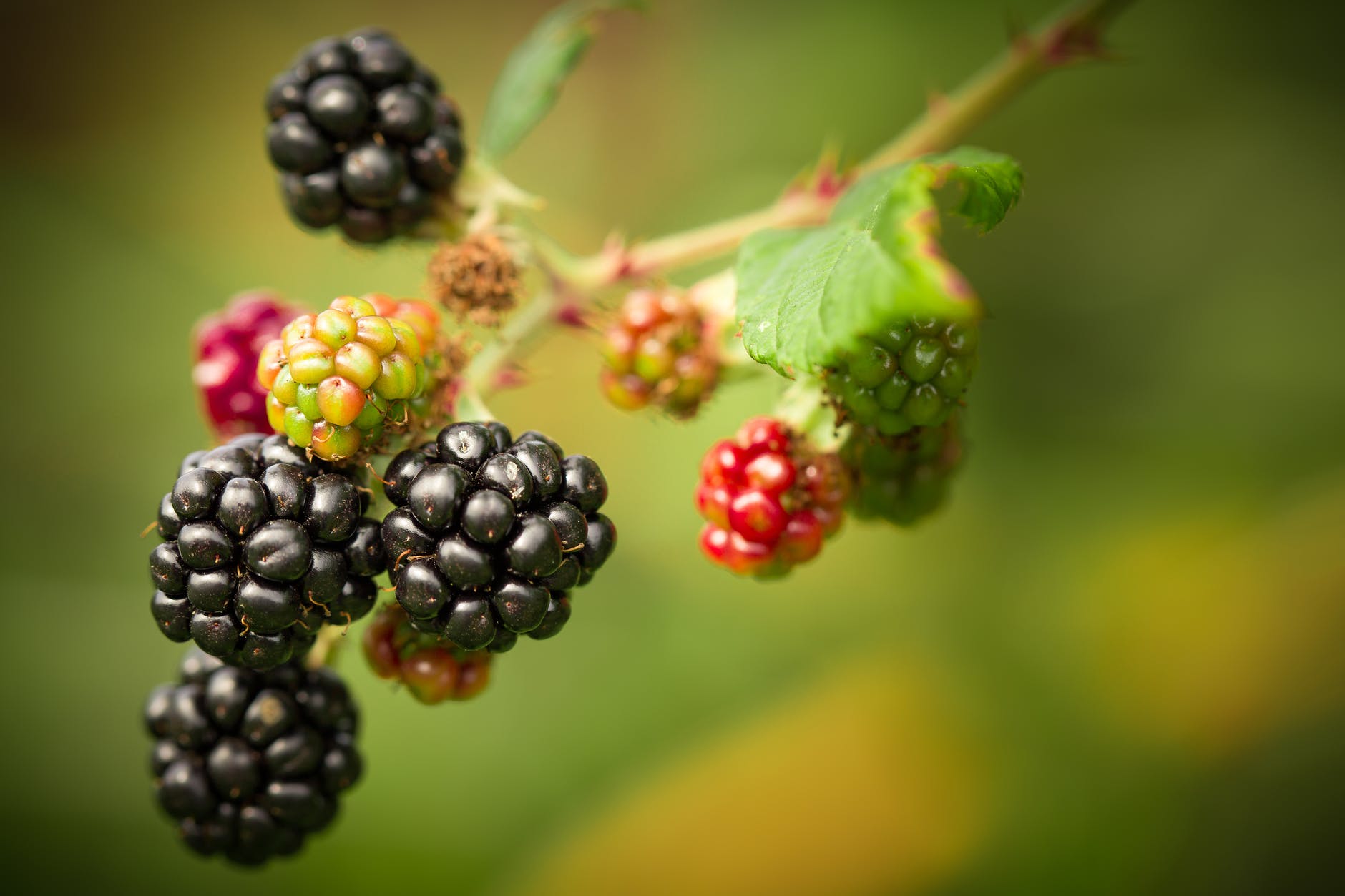
Are you curious to try new fruits, perhaps loquat, mulberries or guava?
Try eating any new fruit while it’s in-season (and preferably local) to make sure you really like it before committing to growing it. For example, I got hooked on passionfruit after my first taste! A few other new-to-me fruits I tried were okay, but not tasty enough that I’d want to grow them.
Are you willing to commit resources to growing this fruit?
An orchard requires more planning than most backyard vegetable gardens. The plants (usually trees or shrubs) are more permanent and quite often, more expensive to purchase as well as maintain. They will take up more space, and more resources such as fertilizer, compost, mulch, and water. Plus, you’ll need to spend time pruning, controlling pests and diseases, and then harvesting. Growing fruit can be a serious investment.
Will This Fruit Grow on Your Homestead?
Do you know your USDA growing zone (if you live in the United States)?
Once you determine your growing zone, you can more safely grow fruits. Knowing if the fruit can survive a frost or freeze, or hot tropical weather can help you create a bountiful harvest.
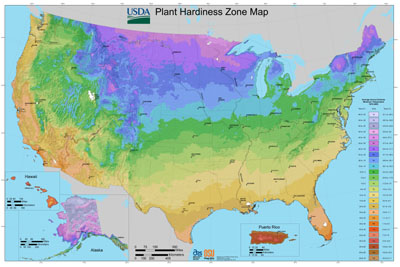
Do you have the correct type of land to grow this fruit?
Just like vegetable gardening, it’s important to know your soil type, alkalinity and any possible nutrient deficiencies. A visit with your local Extension Service can increase your odds of creating a bountiful harvest. They provide excellent advice for what grows best in your area.
Are other Environmental Factors Satisfactory?
Do you have ample sunlight or shade? Is your soil too wet or dry? Rocky or sandy? Every type of fruit is different. For example, dragon fruit are a sub-tropical succulent that like well-drained sandy soil. Elderberry like to be in a wetland environment or near a small stream. Also, make sure you have enough space for when your plants are full-grown.
Why do You need to Grow This Fruit on Your Homestead?
Obviously, we want to grow fruit that we enjoy eating. Other reasons you might consider growing fruit include:
- Fresh fruit contains vitamins, antioxidants, and other nutrients that contribute to a healthy diet.
- Fruit can be made into many delicious things such as pies, juices, teas, salads, used as a side dish, stirred into main dishes, dried for snacks, etc.
- You can control what chemicals do or do not go on your fruit plants.
- Over time, it is much cheaper to grow your own than purchase from the market.
- You become more food-secure by growing your own fruits.
- Extra fruit can be shared with friends and family.
- You can also sell extra, or even grow additional fruits and create an income from your homestead.
- Growing fruit trees and shrubs improves the value of your property.
- Working outside is great exercise and a fun way to soak up the sunshine and get your daily dose of Vitamin D.
- Planting trees helps reduce your carbon footprint.
- You can reduce food waste by harvesting what you need and composting the rest. Return nutrients back to the tree with your mature compost.
- You set a great example for others.
How Will You Obtain Your Fruit Plants?
There are many ways you can acquire fruit trees and plants. You can purchase fruit trees, shrubs, and plants from a nursery or garden center, you can start them from seed, or propagate them from cuttings.
Here’s How We Started
Once we’d created our list of favorites, and determined what would grow here in Central Florida, we began searching for inexpensive trees, shrubs, and perennial plants.
Knowing that we had two years to wait until purchasing a new homestead, we realized starting trees from seed would be an inexpensive option. All of our trees we sprouted indoors in small pots, then planted them outside in 5-gallon buckets or similar-sized pots. They are growing well and will be easy to transport when we eventually move.
This is our current list of fruits we are growing, and how we’ve obtained them.
Lemon Trees – We were gifted a basket of lemons when we first moved into our neighborhood. They were from our neighbor’s backyard tree. We saved many of the seeds, sprouted them, and now have 12 potted trees.
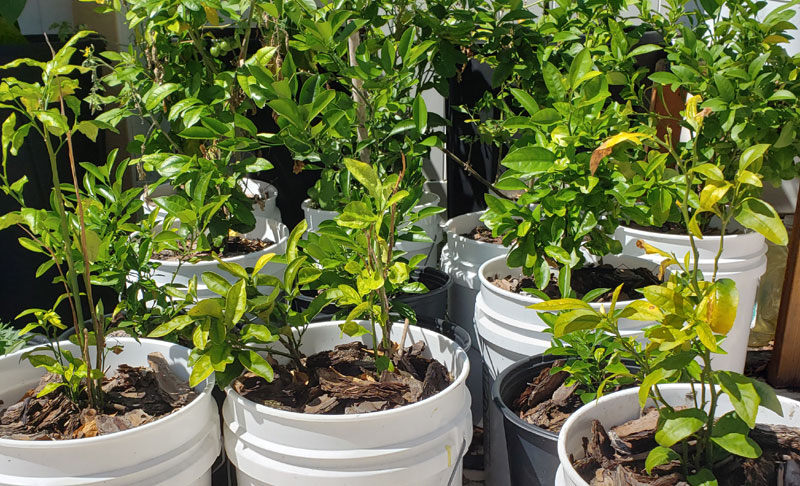
Kumquat Trees – While out for an evening stroll, we found some fruit on the ground below another neighbor’s kumquat tree. They were overripe and starting to rot. I gathered a handful of the overripe fruit and planted the seeds. They sprouted just as easily as the lemon seeds. We now have 8 kumquat trees about a foot tall.
Avocado Trees – Shortly after moving to our neighborhood, we met another neighbor and spent some time visiting at his home. He’s an older man, very kind and knowledgeable. He gifted us 4 beautiful avocados from his backyard tree which was well over 35 years old. The avocados were delicious! Once more, I saved seeds and sprouted all four of the avocado pits. They are growing into beautiful trees!
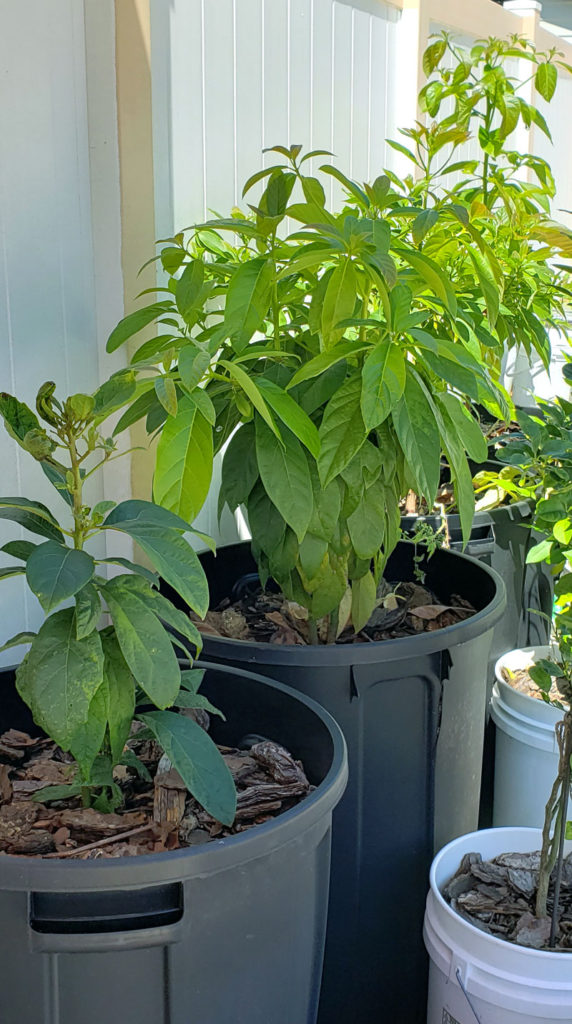
Blackberry Bush – This was our first fruit purchase. I bought it at our local Walmart where it was discounted in the garden section. It is called a “Sweetie Pie” blackberry. It’s a hybrid that can handle the heat and humidity of our Florida summers.
Pineapple – We have 9 pineapples growing in our “pineapple island.” Currently, three of them are producing new fruit. All of them were obtained by purchasing a pineapple at the grocery store. They are easy to propagate by cutting off the tops then planting outside. Many of our neighbors have flowerbeds filled with pineapples.
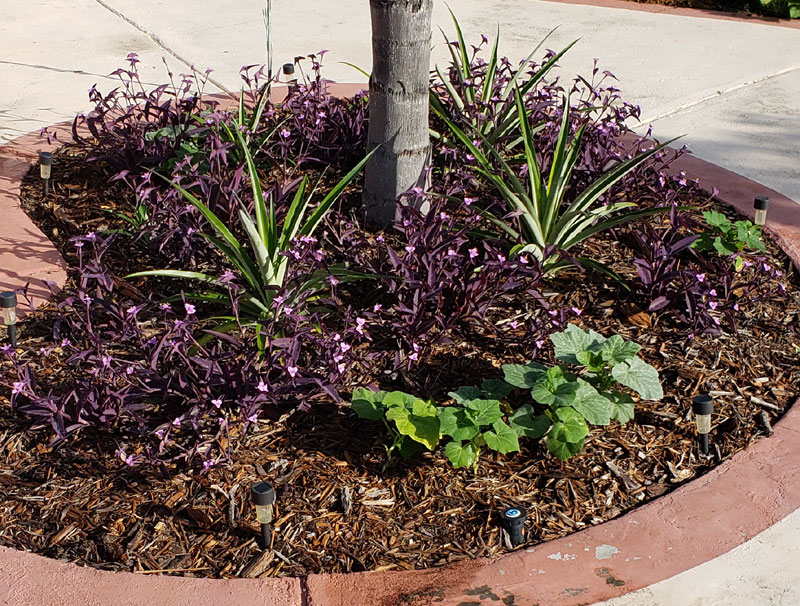
Beauty Berry – This deciduous shrub grows wild all throughout the southeastern United States. I found several of these berry bushes last fall on a hike and foraged just enough berries to make a few pints of jelly. I also saved out a bunch of berries and planted them in native soil. They came up this spring and I’ll soon be separating them into their own pots, plus putting a few in the garden. They are a beautiful edible landscaping fruit.
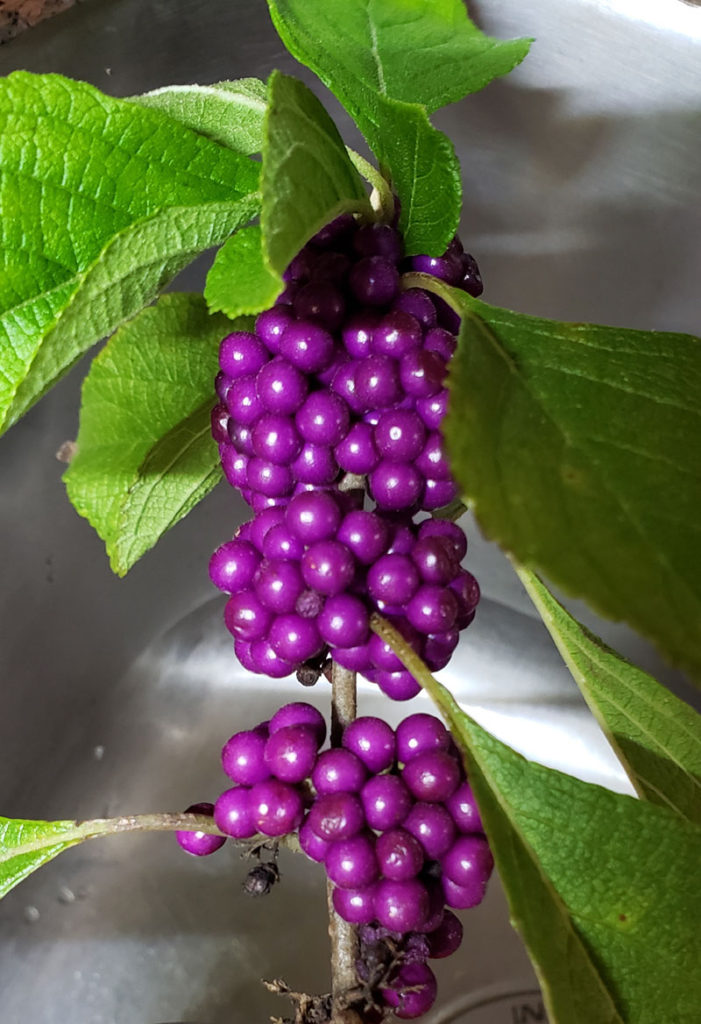
Dragon Fruit – This past winter, when they were in season, I spent just under $5.00 for one dragon fruit! My husband and I enjoyed the taste, but not the price! Our climate is perfect for growing this sub-tropical succulent, so I found some YouTube videos and learned how to grow this popular fruit. I planted a bunch of seeds from the fruit I had bought. The many seeds created an explosion of growth! Now, I have 88 seedlings in fifteen clay pots. It will probably take 4-5 years for any to produce fruit, but we have plenty of time yet for them to grow.
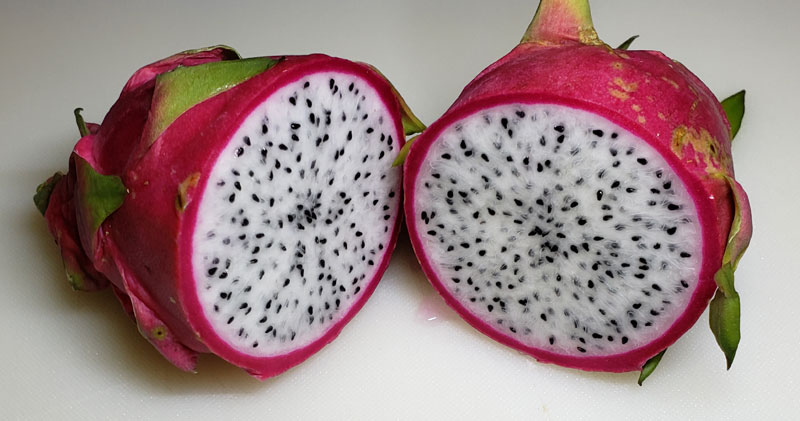
Persimmon – I acquired persimmon tree seeds from my very first seed-swap via USPS mail. I had traded zucchini and yellow squash seeds for about 15 persimmon tree seeds. Thirteen tree seedlings came up in February after cold-stratifying over the winter. Seed-swapping is a great free way to share extra seeds with others and get something just as good in exchange.
Passion Fruit – This perennial vine is a fruit I’ve been waiting to grow for a while now. Not only is the fruit delicious, but you can make a calming tea from the leaves. I bought some Florida-grown fruit from a grocery store and saved the seeds. They sprouted really well and I have about a dozen growing in various places around our garden. I can’t wait to see their beautiful purple and white blossoms!
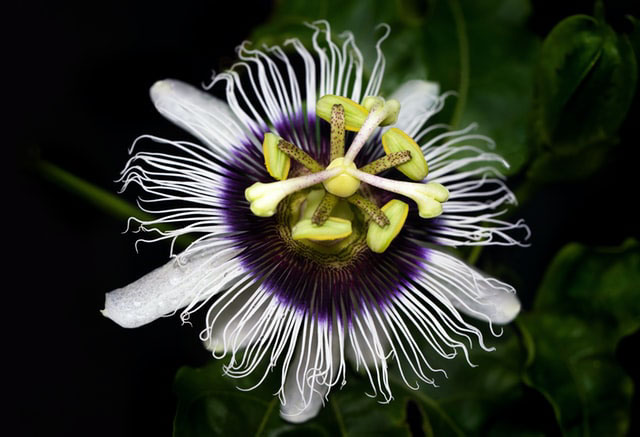
Are You Ready to Plan Your Orchard?
Mike and I hope we have inspired you to start planning how you can inexpensively add fruit to your homestead landscape. Start out with one or a few favorites, and gradually add to your collection. Almost all of our fruits are growing in pots, waiting to be planted in their forever home at our future homestead.
As the months go on, we’ll be creating more detailed plans and drawings of our future citrus orchard, traditional fruit orchard, small vineyard of muscadine grapes, berry hedges, dragon fruit patio, and so much more!
We welcome you to join us on our journey.
Come grow with us!
Alisa & Mike
Very interesting and a great way to get a jump start on getting an orchard going.